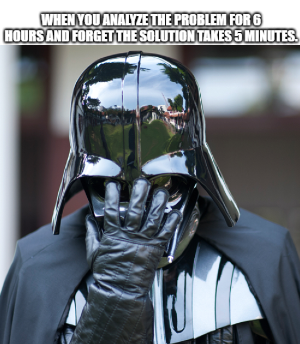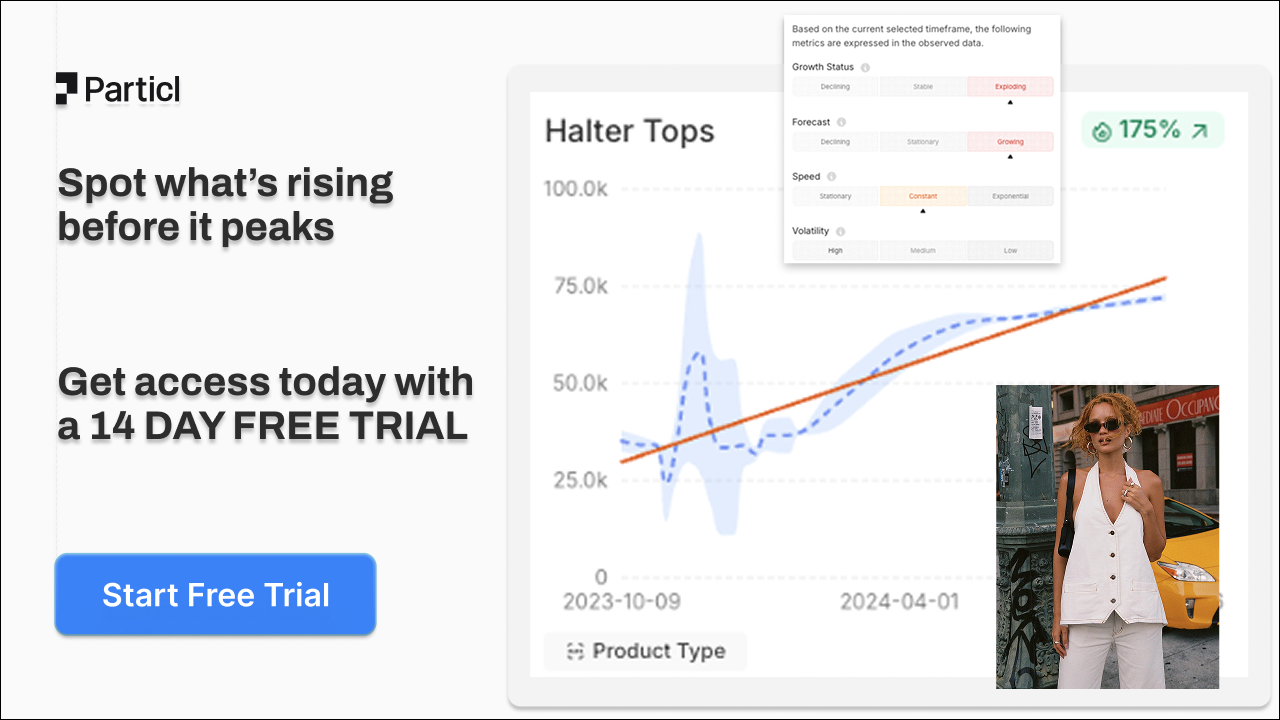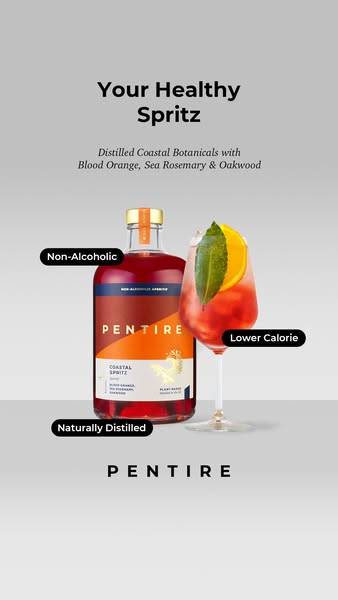The Meme Funnel Nobody Runs
🧠 0.4 second lifts hiding in plain sight, AI Max & Shopping Updates, and more!


Howdy readers 🥰

In this newsletter, you’ll find:
🧠 The Meme Funnel Nobody Runs
🔍 Google Ads: AI Max & Shopping Update
🏆 Ad of the Day
If you’re new to ScaleUP, then a hearty welcome! You and 50k+ CEOs, CMOS, and marketers have reached the right place. Let’s get into it, shall we? Oh! Before you forget, if someone forwarded this newsletter to you, don't forget to subscribe to our newsletter so you never miss out!

Together with Particl
See the Wave Before Everyone Else Rides It

Missing a trend isn’t just bad luck; it’s lost revenue. By the time most brands notice what’s rising, competitors are already running ads, filling carts, and capturing market share.
That delay costs more than sales; it leaves your entire growth strategy reactive.
With Particl’s Trends Tool, you:
📈 Spot which product categories are gaining momentum
🏷 Track keywords before they flood paid channels
👗 Identify materials, styles, and aesthetics spiking in popularity
🔍 See which companies are pulling ahead in real time
This isn’t guesswork or social media hype; it’s powered by real consumer data trusted by 10,000+ brands like Skims, Mejuri, and Vuori to anticipate demand before it’s obvious.
The question is simple: will you ride the next wave, or miss it watching competitors cash in?
Start your 14-day free trial today!

🧠 The Meme Funnel Nobody Runs
Many Marketers dunk on memes. But done right, memes are conversion Trojan horses, not just traffic candy. The key is engineering the meme format to carry your brand logic, without relying on cultural trends or viral luck.
This isn’t about mimicking Gen Z humor. It’s about building top-of-funnel (TOF) frameworks that train audiences to internalize your product category through something familiar and deceptively simple.
Why Memes Work at TOF (When Built Right)
Memes compress meaning. They encode emotion, context, and status signals in a single frame, perfect for the 0.4-second attention window at TOF. The best DTC brands now treat memes not as “social filler,” but as structured frameworks for category education.
Here’s the unlock: people don’t process new products logically; they process them symbolically. Memes let you ride pre-wired symbols into the consumer’s brain.
The 3 Meme Formats Built for DTC TOF
- The Trojan Meme
- Use a culturally common meme (like “Drakeposting” or “NPC Logic”) to smuggle in a core product reframe.
- Example: A gut-health brand used the “split button” meme to contrast taking pills vs. drinking their tonic. CTR lifted 22% vs. traditional explainer.
- The Product-as-Punchline Meme
- Treat your product as the emotional release of the meme, not the subject.
- Works best when paired with absurd humor and high shareability.
- Watch how brands like Olipop make the product payoff feel like an inside joke.
- The Structured Meme Carousel
- Recreate viral meme formats as Instagram carousel sequences that escalate into a product pitch.
- The first few slides train attention. Last one flips to CTA.
- High-performing in B2B-DTC crossovers (e.g., finance, wellness, techwear).
Meme Familiarity vs. Originality: What Lifts CTR?
Test ads across two axes:
- Familiarity: Known formats (e.g., Wojak, starter packs)
- Originality: Custom memes built from brand aesthetics
Benchmarks show:
- Familiarity lifts CTR by 18–27% at TOF
- Originality improves save/share rate by 21–35%
- Combine both in retargeting loops for memory layering
Why It Works Now
With CPMs rising and visual fatigue setting in, meme DNA gives your creative both pattern recognition and pattern interruption. It rides the neurological edge between comfort and surprise. Smart brands build internal meme libraries, not to go viral, but to dominate attention with a margin.

🔍 Google Ads: AI Max & Shopping Update
Google clarified how AI Max works in Search and where smaller accounts can benefit, while also introducing a new control for Shopping campaigns. The updates balance automation with more granular management.

The Breakdown:
1. Audience Exclusions in Shopping Campaigns - Google Ads now supports audience exclusions in Shopping, something previously unavailable. Early users report access while rollout continues gradually. The feature lets advertisers prevent wasted spend by filtering out irrelevant audiences.
2. No Conversion Minimums for AI Max - Google confirmed AI Max can run in low-volume accounts without conversion minimums. The only requirement is using conversion-based Smart Bidding so search term matching functions correctly.
3. How Smaller Accounts Can Gain - AI Max gives the highest uplift with exact and phrase match keywords. It expands coverage using landing pages, ad assets, and ad-group keywords, while simplifying local campaigns by handling geographic matching.
These updates make AI Max usable across account sizes and introduce long-requested targeting control in Shopping. Together, they highlight Google’s push to unify automation with practical safeguards.

Together with The Shift
You’re Not an AI Beginner. You’re Just Learning It Backwards.

You don’t need another explainer thread.You need to unlearn the slow way people are picking up AI.
At The Shift AI, we help you flip the script and go straight to application.
✅ Build AI workflows that replace manual processes
✅ Use prompts to think better, not just type faster
✅ Automate outcomes, not just responses
Most people start with tools. You’ll start with strategy.
Join today and get 2000+ top tools, 300+ proven prompts, and access to our free AI courses.

🏆 Ad of the Day

What Works and Insights:
1. Clear Health Positioning - The line “Your Healthy Spritz” sets the frame right away, placing the drink in the wellness category instead of just beverages, tapping into the growing demand for “better-for-you” alternatives while still promising the indulgence of a spritz. A smart move here is making “healthy swap” the first association in the customer’s mind.
2. Benefit Callouts Made Simple - The visual tags like “Non-Alcoholic,” “Lower Calorie,” “Naturally Distilled” make the benefits obvious at a glance. The move is to stick with quick, high-impact claims that remove friction in decision-making, especially in crowded categories where attention spans are short.
3. Elevated Visual Language - The sleek product photography and minimal grey-white background make the drink feel premium and aspirational. The play here is leaning into aspirational lifestyle cues (design, plating, settings) so the brand competes with luxury spirits rather than cheap alternatives.
Final Takeaway
This ad shows how “healthier alternatives” can win not by copying the indulgent category they replace, but by reframing themselves as equally aspirational with the added benefit of wellness. For brands, the lesson is that health cues alone don’t sell, they need to be paired with lifestyle signals that elevate the choice into something people are proud to display.

Advertise with Us
Wanna put out your message in front of over 50,000 best marketers and decision makers?

We are concerned about everything DTC and its winning strategies. If you liked what you read, why not join the 50k+ marketers from 13k+ DTC brands who have already subscribed? Just follow this.
At ScaleUP, we care about our readers and want to provide the best possible experience. That's why we always look for ways to improve our content and connect with our audience. If you'd like to stay in touch, be sure to follow us EVERYWHERE🥰
Thanks for your support :) We'll be back again with more such content 🥳

